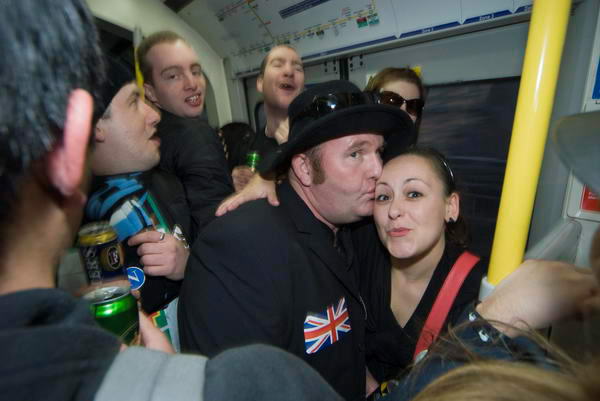
Bus in Peckham, 1991 (C) Peter Marshall
A day or two ago someone asked on an on-line photography forum if anyone knew of a book on the subject of candid photography they could recommend, mentioning one publication they had already been given as a present. (I haven’t read it, but what looks to me a rather posed portrait on the cover didn’t inspire confidence.
My immediate response was to wonder what there was to write a book about, which perhaps wasn’t the most helpful of comments, although perhaps appropriate. On further thought what I would recommend is Ralph Hattersley’s ‘Beginner’s Guide to Photographing People‘, published in 1975, though it came out in the UK, published by Robert Hale Ltd, in 1979. (ISBN 0709174039)
It’s a work that I admire for starting with a discussion of the ethical basis of portraiture, and with a listing of some of the wrong and the right reasons for taking pictures of people, in a chapter on taking candid portraits. Later in the book there are chapters on how to make staged candid pictures and how to photograph strangers in the street – and that also starts with an examination of your motives.
Hattersley also does a pretty thorough job of the technical stuff, including lighting. Of course its a book written for photographers using film, but really digital hasn’t changed things that much, although some cameras at least provide new opportunities for shooting with the camera away from your eye.
The very term ‘candid photography’ has a dated feel to it. I immediately think of the 1930s ‘Mass Observation’ project and the splendid images of Humphrey Spender on the streets and in the pubs of ‘Worktown.’ If you have any doubts about the validity of working in this way, take a look at the way the Bolton Museums now give the work a proud place on their web site. As they write, “He used what was at the time cutting-edge technology in the form of an unobtrusive 35mm Leica camera.” In some respects the early screw Leica that he used was a better instrument than the later M cameras for this kind of work – where you don’t change lenses. It was smaller and less obtrusive, and I think the shutter was perhaps even quieter. Certainly much quieter than that on the latest digital Leica M8, and even the promised (and expensive) replacement will still be rather more noticeable.
Bolton’s weather also helped Spender, since he spent most of his time there wearing a mackintosh, keeping the camera hidden under this except when he was actually taking a picture. As they note, “He recalled that the occasional Boltonian would react angrily if they discovered him taking a photograph.” There was a feeling of being spied on – rather more rational then than under the Panopticon of security cameras that now track us through much of our lives. Spender himself they suggest “disliked the intrusiveness of his work” and the stress of documentary was one reason why he turned away from photography to painting and stage design.
I think photographers always have a responsibility to their subject, and especially so when you photograph people without their permission. I often take pictures I would not use, perhaps because I’ve caught a moment when they look distinctly peculiar (something some other photographers sometimes seem to strive for.) Or when photographing a flamenco dancer recently, the picture that caught the fleeting fraction of a second where her rapidly swirling skirt revealed rather more than intended. I perhaps see it as my job to try and see the picture as the people in in might see it years later in a book or museum rather than an immediate reaction.
One of the great projects of candid photography was made by Walker Evans, travelling on the New York City subway trains, often accompanied by his assistant Helen Levitt. Starting in 1938 he photographed using a Leica hidden under his coat, its lens poking out, making around 600 photographs. He had conceived the project with the help of his collaborator, writer James Agee – they were working together on the even more famous ‘Let Us Now Praise Famous Men‘, published in 1941 – and Agee in 1940 wrote a preface to the subway work. Although the pictures were finished in 1941, it was not until twenty-five years later in 1966 that ‘Many Are Called’ was published to accompany a show of the images from it at the Museum of Modern Art in New York.
While at the time the pictures might have been seen as an intrusion into privacy, the passing of time gives us – and any of the subjects – a different perspective. The work was published again in 2004 by the Yale University Press and the Metropolitan Museum of Art mark the 100th anniversary of the subway system, with new texts and also greatly improved reproduction of the images, thanks to new digital scans.
I was reminded only briefly of this work on Saturday, as I crammed into an underground carriage full of Kiwis out with a few thousand others for their Waitangi Day Circle Line Pub Crawl. This image, taken with a 12mm lens on a Nikon D200 may in some respects qualify as candid, but was certainly not made without the knowledge and willing consent of those shown.

New Zealanders celebrate Waitangi Day on the Circle Line Pub Crawl
(C) Peter Marshall, 2008
More pictures as usual on My London Diary. More about candid photography in other posts shortly – including Stream of Consciousness.